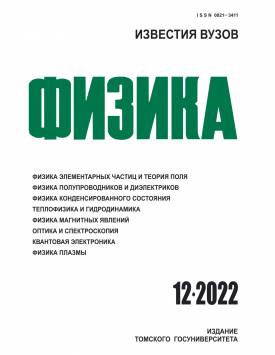Manufacturing of MAX-phase based gradient porous materials from preceramic papers
This paper demonstrates a new approach to manufacturing gradient porous composite materials based on the Ti3Al(Si)C2 MAX phase. The approach is based on the production of preceramic papers with different content of MAX phases powder filler, followed by spark plasma sintering. The microstructure of the composites and their phase composition was analyzed. It is shown that the obtained composites have a clearly distinguishable interface between layers with different porosity. It has been established that the proportion of organic components in preceramic papers affects the phase composition of the fabricated composites. The content of the MAX phase in dense layers was 86 vol.%, and in porous layers, 56 vol.%. Microhardness measurements were carried out along the cross section of the composites, which showed a change in hardness values from 510 HV to 820 HV depending on the porosity of the layer.
Keywords
preceramic papers,
MAX phases,
spark plasma sinteringAuthors
| Krotkevich D.G. | National Research Tomsk Polytechnic University | dgk7@tpu.ru |
| Kashkarov E.B. | National Research Tomsk Polytechnic University | ebk@tpu.ru |
| Mingazova Y.R. | National Research Tomsk Polytechnic University | yrm1@tpu.ru |
| Lider A.M. | National Research Tomsk Polytechnic University | lider@tpu.ru |
| Travitzky N. | National Research Tomsk Polytechnic University | nahum@tpu.ru |
Всего: 5
References
Barsoum M.W. // Prog. Solid State Chem. - 2000. - V. 28. - No. 1-4. - P. 201-281.
Zhang Z. et al. //j. Eur. Ceram. Soc. - 2021. - Т. 41. - No. 7. - P. 3851-3878.
Сметкин А.А., Майорова Ю.К. // Вестник Пермского национального исследовательского политехнического университета. Машиностроение, материаловедение. - 2015. - Т. 17. - № 4.
Zhou A., Wang C.A., Hunag Y. //j. Mater. Sci. - 2003. - V. 38. - No. 14. - P. 3111-3115.
Перевислов С.Н., Арлашкин И.Е., Лысенков А.С. // Новые огнеупоры. - 2022. - № 4. - С. 34-39.
Li X. et al. // Corrosion Science. - 2021. - V. 185. - P. 109431.
Pal N. et al. // Mater. Today: Proceedings. - 2020. - V. 28. - P. 1386-1391.
Duran M., Tüzün F.N. // Int. J. Hydrogen Energy. - 2021. - V. 46. - No. 57. - P. 29216-29229.
Wang C. et al. // Carbon. - 2015. - V. 85. - P. 445.
Sun Z. et al. //j. Am. Ceram. Soc. - 2010. - V. 93. - No. 9. - P. 2591-2597.
Velasco B., Gordo E., Tsipas S.A. //j. Alloys Compd. - 2015. - V. 646. - P. 1036-1042.
Potoczek M. et al. //j. Am. Ceram. Soc. - 2018. - V. 101. - No. 12. - P. 5346-5357.
Bowen C.R., Thomas T. // Ceram.Int. - 2015. - V. 41. - No. 9. - P. 12178-12185.
Сметкин А.А. и др. // Новые огнеупоры. - 2020. - № 1. - С. 57-62.
Firstov S.A. et al. // Powder Metall. Metal Ceram. - 2010. - V. 49. - No. 7. - P. 414-423.
Baumann S., Meulenberg W.A., Buchkremer H.P. //j. Eur. Ceram. Soc. - 2013. - V. 33. - No. 7. - P. 1251-1261.
Dermeik B. et al. // Adv. Eng. Mater. - 2019. - V. 21. - No. 6. - P. 1900180.
Travitzky N. et al. //j. Am. Ceram. Soc. - 2008. - V. 91. - No. 11. - P. 3477-3492.
Kashkarov E.B. et al. // Adv. Eng. Mater. - 2020. - V. 22. - No. 6. - P. 2000136.
Krotkevich D.G. et al. // Ceram.Int. - 2021. - V. 47. - No. 9. - P. 12221-12227.
Kashkarov E.B. et al. //j. Eur. Ceram. Soc. - 2022. - V. 42. - No. 5. - P. 2062-2072.
Mingazova Y.R. et al. //j. Phys.: Conf. Ser. - 2021. - V. 1989. - P. 012031.
Sedanova E.P. et al. //j. Phys.: Conf. Ser. - 2020. - V. 1611. - P. 012007.
Grove C., Jerram D.A. // Comput. Geosci. - 2011. - V. 37. - No. 11. - P. 1850-1859.
Wo S. et al. // Int. J. Appl. Ceram. Technol. - 2019. - V. 16. - No. 6. - P. 2398-2408.
Zhou Y.C., Chen J.X., Wang J.Y. // Acta Mater. - 2006. - V. 54. - No. 5. - P. 1317-1322.
Zhou W.B., Mei B.C., Zhu J.Q. // Mater. Lett. - 2005. - V. 59. - No. 12. - P. 1547-1551.
